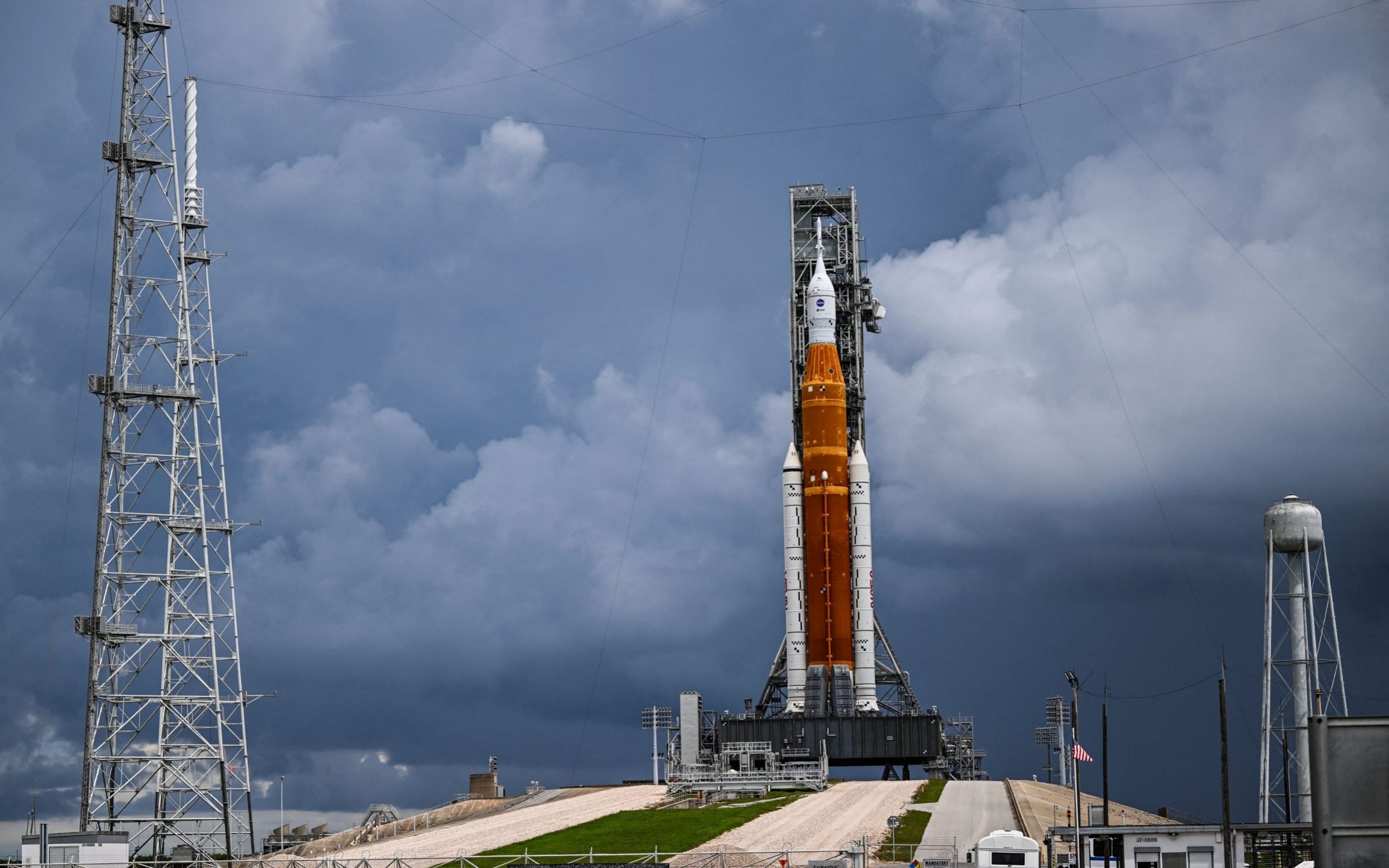After it developed a dangerous leak on Saturday, NASA’s Artemis 1 new moon rocket launch has been beset by issues once again. When the fuel leak started, the launch crew for the US space agency had already started fueling the rocket, raising doubts about whether the Artemis 1 test mission, which must succeed before astronauts board, would really fly. On Monday, the 98-meter Space Launch System rocket was scheduled to make its first launch with three test subjects on board.
However, a faulty engine sensor and gasoline leak derailed the endeavor. The most powerful rocket ever constructed by NASA, the 98m Space Launch System, had its fuel filling procedure restarted on Saturday for the 2nd attempt this week. An over-pressure alert went off as the sun rose, momentarily stopping the tanking procedure, but no harm was done and it was able to continue, according to NASA’s Launch Control.
A few moments later, though, hydrogen fuel started to flow from the rocket’s engine component at the base. While experts rushed to close what was thought to be a crack around a seal, NASA stopped the operation. There were just two hours left for NASA to launch the rocket as the timers continued to count down to an afternoon launch.
Before humans board the subsequent voyage, NASA aims to complete a full orbit of the moon in the crew capsule atop the rocket. Astronauts might fly around the moon in 2024 and arrive there in 2025 if the five-week test demonstration using test dummies is successful. 50 years have passed since the last lunar landing.
Weather conditions at Kennedy Space Center were projected to be generally favorable, particularly near the conclusion of the two-hour afternoon launch window. But the rocket’s top engineers still have faith in the new and improved fuel lines and procedures.
Engineers subsequently confirmed one of the four engines was indeed cool enough, despite a sensor on Monday suggesting it was too warm. This time, the launch crew intended to disregard the defective sensor and depend on other equipment to verify that each main engine was sufficiently cooled.
The primary engines must be as icy as the -250C liquid hydrogen fuel pouring into them before they can ignite. If not, the harm that results might cause a sudden engine shutdown and forced landing. Managers of the mission recognized the increased danger that the engine issue and a different issue—cracks in the rocket’s insulating foam—posed. However, they recognized that more issues may result in yet another postponement.
Update: Just hours before the 2:17 p.m.ET launch window, Artemis Launch Director Charlie Blackwell-Thompson gave the go-ahead for the 322-foot SLS rocket to begin loading propellants, the agency reported.
Source: Fox News, ITV

